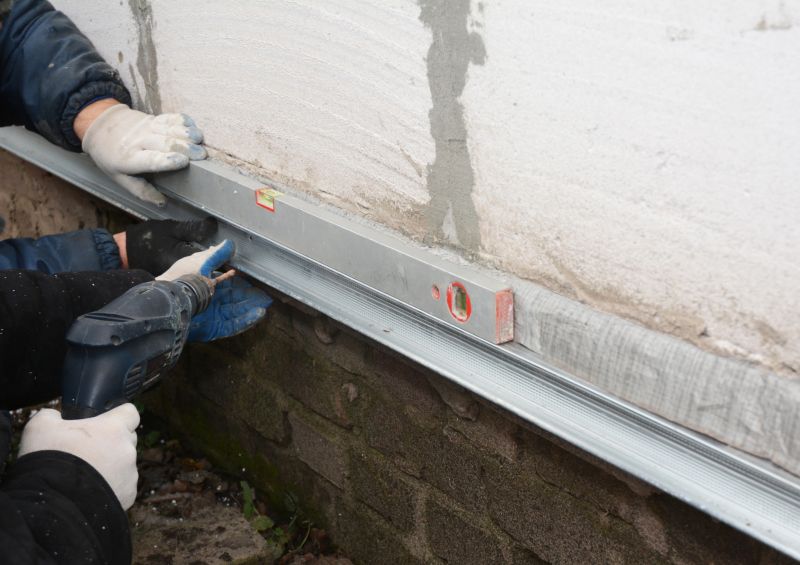Leading Products For Foundation Inspections You Can Trust
Discover essential tools and equipment designed to ensure accurate foundation assessments for safer, more reliable structures.
 Foundation inspections are a critical component of maintaining the structural integrity of a building. They involve assessing the condition of the foundation to identify potential issues such as cracks, shifts, or signs of settling that could compromise safety or lead to costly repairs. Utilizing the right tools during these inspections ensures a thorough and accurate assessment. From handheld devices to sophisticated detection systems, a variety of products are available to assist inspectors in evaluating foundation health effectively.
Foundation inspections are a critical component of maintaining the structural integrity of a building. They involve assessing the condition of the foundation to identify potential issues such as cracks, shifts, or signs of settling that could compromise safety or lead to costly repairs. Utilizing the right tools during these inspections ensures a thorough and accurate assessment. From handheld devices to sophisticated detection systems, a variety of products are available to assist inspectors in evaluating foundation health effectively.
Top Overall Option
Multi-Function Foundation Inspection Kit
A versatile inspection kit that combines multiple tools such as a laser level, moisture meter, and digital camera, providing a comprehensive solution for foundation assessments. Its integrated design allows users to perform visual inspections, measure moisture levels, and document findings efficiently, making it suitable for both professionals and serious homeowners.
Types of Products For Foundation Inspections
Laser Levels
Precision laser levels help identify uneven surfaces and shifts in the foundation by projecting level lines across walls and floors.
Moisture Meters
Devices used to detect moisture levels in concrete and soil, indicating potential water intrusion or dampness issues.
Digital Cameras
High-resolution cameras facilitate detailed documentation of cracks, damages, and other surface anomalies.
Crack Monitors
Tools designed to measure the width and progression of cracks over time, helping assess structural movement.
Infrared Thermometers
Non-contact devices that detect temperature variations which can reveal hidden moisture or insulation issues.
Borehole Inspection Equipment
Tools for inspecting the inside of boreholes or drilled sections to evaluate soil and foundation conditions.
Soil Test Kits
Portable kits for testing soil composition and stability around the foundation area.
Leveling Rods
Measurement tools that assist in checking the levelness and settling of the foundation surface.
Vibration Meters
Devices that detect unusual vibrations or shifts in the foundation structure.
Structural Movement Monitors
Sensors that track shifts or movements in the foundation over time for ongoing assessment.
Concrete Test Hammers
Portable devices that assess the surface hardness of concrete to evaluate its integrity.
Water Level Indicators
Tools to measure water levels around the foundation, helping identify drainage issues.
Ground Penetrating Radar (GPR)
Advanced equipment used to visualize subsurface conditions and detect voids or anomalies beneath the foundation.
Vibration Analyzers
Instruments that analyze vibrations in the foundation to detect movement or structural concerns.
Inspection Drones
Unmanned aerial vehicles equipped with cameras for inspecting hard-to-reach areas of the foundation exterior.
Popular Choices
Widely used for quick assessments of levelness and alignment in foundation inspections.
Commonly selected for detecting dampness and potential water issues in concrete and soil.
Favored for capturing detailed images of cracks and surface conditions in confined spaces.
Popular for tracking crack progression over time to assess movement.
Used frequently to detect temperature variations indicating hidden issues.
Preferred for quick soil analysis around the foundation.
Often chosen to monitor structural vibrations and detect unusual activity.
Utilized for detailed subsurface exploration during foundation assessments.
Commonly used to monitor water levels and drainage around the foundation.
Popular for documenting foundation conditions with high detail.
Frequently used for measuring surface levelness and settling.
Selected for analyzing vibrations that could indicate movement or stress.
A comprehensive foundation inspection often begins with visual assessments, where inspectors look for visible cracks, uneven flooring, or water intrusion around the base. To supplement these observations, specialized tools such as moisture meters and laser levels can provide quantitative data that enhances the inspection process. These tools help identify underlying problems that might not be immediately apparent, such as hidden moisture issues or subtle shifts in the foundation's structure.
Investing in quality inspection products can also facilitate documentation and reporting. Digital cameras with high resolution and portable devices for capturing measurements allow inspectors to record findings accurately and share them with clients or contractors. Properly chosen tools not only improve the precision of inspections but also streamline workflow, making the process more efficient and reliable. Whether for professional inspectors or homeowners conducting a preliminary assessment, selecting the appropriate products is essential for a comprehensive foundation evaluation.
Key Buying Considerations
- Determine the specific inspection needs—visual, moisture, structural, or subsurface analysis.
- Consider the accuracy and precision of measurement tools for reliable results.
- Evaluate the ease of use and portability, especially for on-site inspections.
- Check compatibility with other tools or devices you already own.
- Assess the durability and build quality to withstand field conditions.
- Look for features like data storage, transfer capabilities, and battery life.
- Identify whether the product includes calibration options for ongoing accuracy.
- Review user feedback and ratings for insights into performance and reliability.
- Consider the scope of inspection—whether the tool covers multiple functions or specialization.
- Ensure the product complies with safety standards and manufacturer guidelines.
- Evaluate the availability of customer support and warranty options.
- Think about the environmental conditions where the tools will be used, such as moisture or dust exposure.
- Determine if additional accessories or attachments are necessary for comprehensive inspections.
- Balance cost against features and quality to find the best value.
- Check for compatibility with digital reporting or documentation software if needed.
This content contains affiliate links. We may earn a commission if you purchase through these links, at no additional cost to you.
